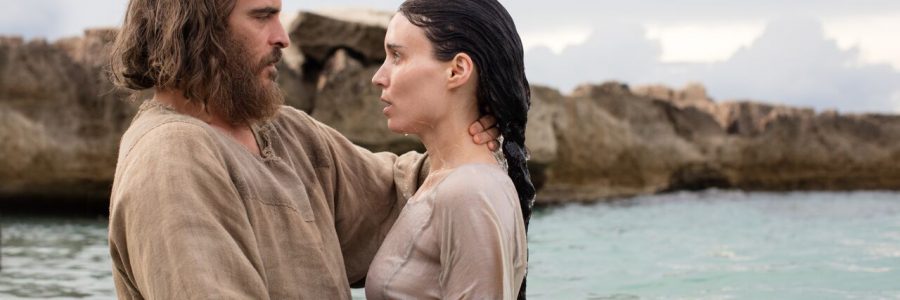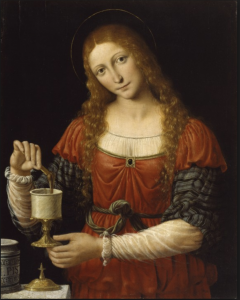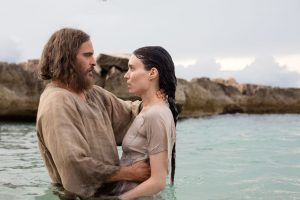
BIBLE STORIES TOLD AND RETOLD GATHER INCREASED UNDERSTANDING


“Mary Magdalene” directed by Garth Davis, Produced by Iain Canning, with a screenplay written by Helen Edmundson and Philippa Goslett, stars Denis Menochet as Daniel, Joaquin Phoenix as Jesus, Rooney Mara as Mary Magdalene and Chiwetel Ejiofar as Peter.
Breathaking scenery, baptisms in the sea, huge efforts to gather an ever increasing crowd of followers, conflicts and deprivation, sleeping often under the stars on naked rocky fields close to the mountains, Jesus truly healing the sick and being hugely tired afterwards, prayer and conflict with adversaries – all these incidents occur in “Mary Magdalene”.
Mary is portrayed in what one can only see as a passive and beautifully spiritual female who wears the traditional robes sometimes covering her head and who possesses a pious sympathetic face with deeply sad reflective eyes and is often filmed in a way that can call up reminiscences of pre-Raphaelite figures who had the longing and yearning, vulnerability and romance of a life where serving God and being femininely submissive and dependant on Jesus was a very integral part of daily life.
Joaquin Phoenix’s Jesus has pious eyes full of wisdom and mystery. His hair falls down to his shoulders in a welcome tangle of passiveness and constant motion. His beard is a little matted and wild with just a touch of everyday care. He is perfectly suited to the role of the Messiah in that he really fills the role with compassion, angst, wisdom, forward thinking and a wholly convincing natural power over his people with recklessness and compassion which prevents him from feeling fear or humility to his enemies. His breaks for prayer in the wildness of nature are convincing and hugely spiritual. In this story, he seems to have submitted to “The Romans”. I am told “The Romans” were not only Roman but also Jews. This is a theory that is debated over and over again in history as to with whom the responsibility really lies as regards the ultimate crucifixion. In this story Jesus seems to submit to a crucifixion rather than back down and seek the higher ground. This is debateable as to its authenticity from the story of The Bible.
Of course we know Mary Magdalene is the “envied” person who finds Jesus alive after a crucifixion which in this film although sensitively handled compared to say, “The Passion of the Christ” is yet bloody and painful to watch. Jesus is shown to go to the place of his ultimate “death” with a reluctance yet at the same an astonishing humility. We have seen him cure people, gather followers, pray, and we have also seen many faces of Mary always at his side as his constant companion and “nurse”. We see him die but when he comes back he is whole. There is no reference to the stone being rolled away, simply a continuance of his life despite his death. To this point we as the viewer are graciously taken. As more credits roll at the ending of this story it is said that Mary Magdalene’s alleged “profession” as a prostitute had been drawn into doubt and that this allegation was untrue…Enjoy….
Penny Nair Price
